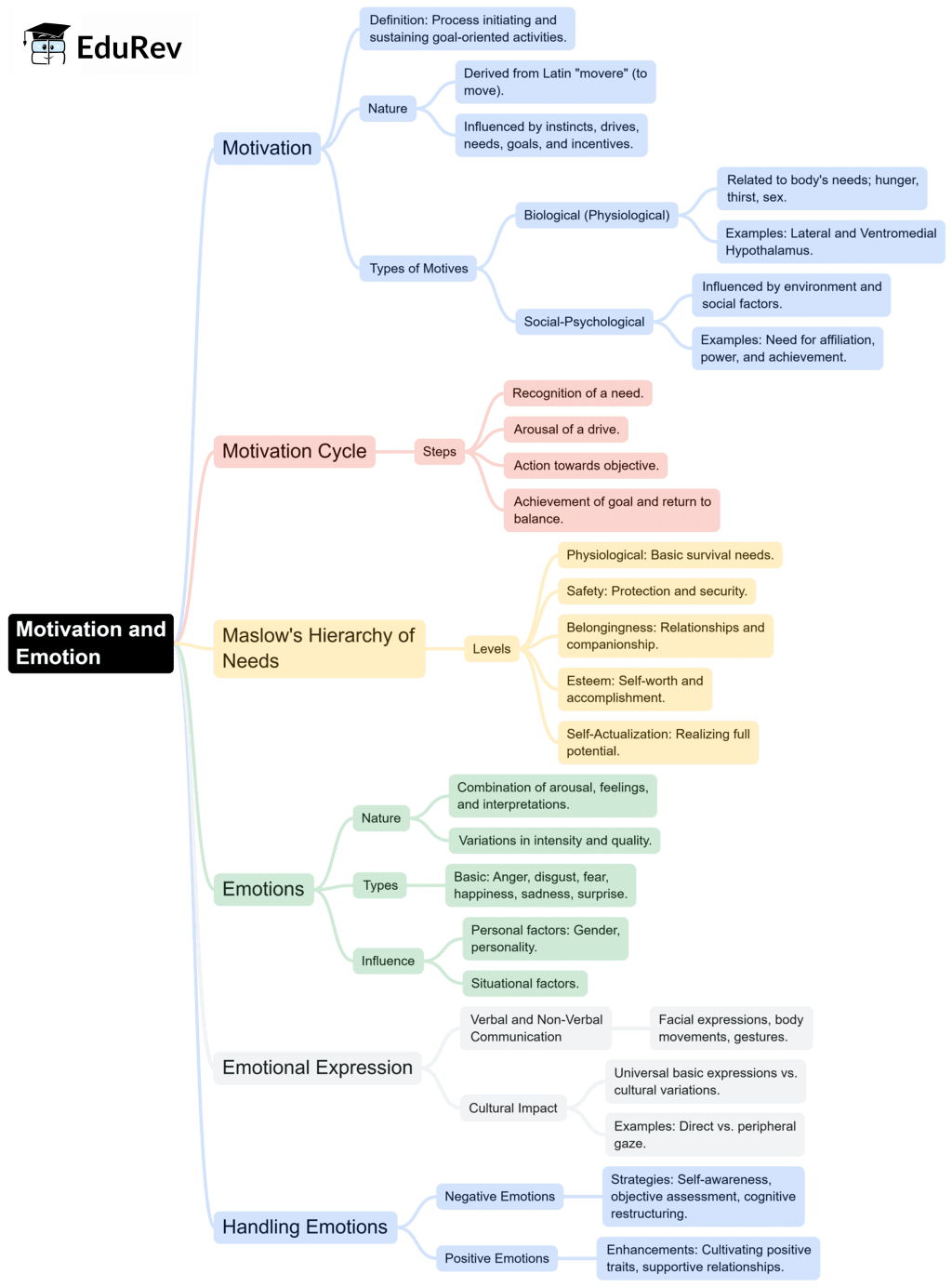Humanities/Arts Exam > Humanities/Arts Notes > Psychology Class 11 > Mind Map: Motivation and Emotion
Mind Map: Motivation and Emotion | Psychology Class 11 - Humanities/Arts PDF Download

The document Mind Map: Motivation and Emotion | Psychology Class 11 - Humanities/Arts is a part of the Humanities/Arts Course Psychology Class 11.
All you need of Humanities/Arts at this link: Humanities/Arts
|
43 videos|119 docs|18 tests
|
FAQs on Mind Map: Motivation and Emotion - Psychology Class 11 - Humanities/Arts
| 1. What is the relationship between motivation and emotion in the context of the humanities and arts? |  |
Ans. Motivation and emotion are deeply interconnected in the humanities and arts. Motivation drives individuals to engage in creative processes, while emotions shape the content and expression of artistic works. For example, an artist's emotional experiences can inspire their work, while the motivation to express these emotions can lead to the creation of impactful art.
| 2. How do different theories of motivation apply to artistic expression? |  |
Ans. Various theories of motivation, such as Maslow's hierarchy of needs, intrinsic and extrinsic motivation, and self-determination theory, can be applied to artistic expression. For instance, artists may be intrinsically motivated by the joy of creation or the desire for self-expression, while extrinsic factors like recognition and financial success can also play a role in their work.
| 3. How can understanding emotions enhance the appreciation of art? |  |
Ans. Understanding emotions can significantly enhance the appreciation of art by allowing viewers to connect more deeply with the artwork. Recognizing the emotions that inspired a piece can provide context and meaning, fostering a more profound engagement and appreciation of the artist's intentions and the emotional landscape they are depicting.
| 4. What role does cultural context play in shaping motivation and emotion in artistic endeavors? |  |
Ans. Cultural context plays a crucial role in shaping both motivation and emotion in artistic endeavors. Different cultures may prioritize various emotional expressions and motivations for creating art, influencing how artists approach their work and how audiences interpret it. This can lead to diverse artistic styles and themes that reflect the values and experiences of a particular culture.
| 5. How can the study of motivation and emotion in the arts contribute to personal development? |  |
Ans. Studying motivation and emotion in the arts can contribute to personal development by enhancing self-awareness and emotional intelligence. Engaging with art can help individuals explore their own emotions and motivations, leading to greater self-understanding and personal growth. Additionally, creating art can serve as a therapeutic outlet, facilitating emotional expression and processing.
Related Searches





















